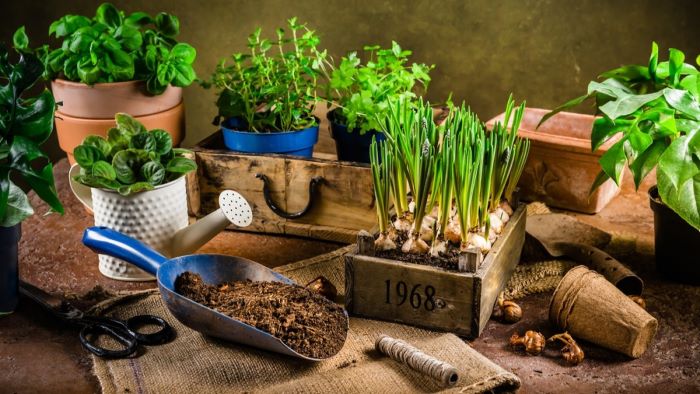If you love gardening, you know how important it is to choose the right plants for your garden. We know it very well, plants can make or break the look and feel of your outdoor space, as well as affect your health and well-being. But with so many options available, how to choose the best plants for your garden?
In today’s blog, we will share some tips and tricks to help you find the perfect plants for your garden. There are so many factors to consider, such as climate, soil, light, water, size, shape, color, texture, function, and style. So, we are here to help you find the plants that suit your needs and preferences.
By following these steps, you will be able to create a garden that is beautiful, productive, and easy to maintain.🌱
Contents
Factors to Select the Right Plants for Your Garden
Well, selecting the right plants for your garden can be tricky. Here are some factors to consider before you buy.
1. Size of the Backyard
The size of your backyard will determine how many plants you can grow and how big they can be. It is recommended to choose plants that fit the scale of your space and leave enough room for movement and maintenance.
For example, if you have a small backyard, you can opt for dwarf trees, compact shrubs, and container plants that won’t take up too much space. On the other hand, if you have a large backyard, you can easily plant larger trees, hedges, and flower beds, that will create a lush and diverse landscape.
2. Garden’s Climate
Another factor in selecting the right plants for a garden is the climate of that region. Yes, the climate of your garden will affect the survival and growth of your plants. That’s why you should choose plants that are suited to your hardiness zone, which is a measure of the average minimum winter temperature in your area.
Furthermore, you can also find your hardiness zone online by entering your postal code. In addition, you should also consider the heat and humidity levels, precipitation patterns, and frost dates in your region.
Let me explain with an example: If you live in a cold climate, you should plant hardy perennials that can withstand low or fluctuating temperatures. But if you live in a tropical or subtropical climate, you should plant heat-tolerant plants that thrive in warm and humid conditions. Similarly, if you live in a dry climate, you should plant drought-resistant plants that don’t need much water.
3. Garden Condition
The condition of your garden will influence the health and appearance of your plants. Yes, you heard it right. You should choose plants that match the soil type, drainage, light and shade, and wind exposure of your garden. For instance, if you have clay soil, you should plant species that can tolerate poor drainage and heavy texture. On the other hand, if you have sandy soil, you should plant species that can adapt to low fertility and fast drainage.

Furthermore, if you have acidic soil, you should plant species that prefer a low pH level. On the other side, for those who have alkaline soil, you should plant species that favor a high pH level.
You should also test your soil regularly and amend it as needed with organic matter, fertilizers, or lime.
4. Function Factor
Another one is the function factor, which refers to the purpose and use of your plants in your garden. We suggest you choose plants that serve a specific function or multiple functions in your landscape design. For example, some plants can provide food, such as fruits, vegetables, herbs, and edible flowers. But, if you want to create some shade, you can use trees, vines, and pergolas. On the other hand, if you want to increase your privacy, you can use hedges, fences, and screens.
Moreover, if you want to attract wildlife, you can use native plants, bird feeders, and water features. In addition, if you want to enjoy some fragrance, you can use roses, lavender, and jasmine. Furthermore, if you want to add some color, you can use annuals, perennials, and bulbs. Similarly, if you want to create some texture, you can use grasses, ferns, and succulents. Finally, if you want to add some structure, you can use shrubs, apiaries, and sculptures.
5. Aesthetic Look
The aesthetic look factor means the style and theme of your garden. You should pick plants that go well together and create a pleasing and beautiful visual effect. For example, if you want a colorful and cheerful garden, you can choose plants that have similar or different colors, such as tulips, daisies, and sunflowers. Or, if you want a calm and serene garden, you can select plants that have similar or contrasting shapes, sizes, and textures, such as bamboo, ferns, and moss.

Furthermore, you can also pick plants that match a certain theme or style, such as a cottage garden, formal garden, tropical garden, Japanese garden, or rock garden. For instance, if you want a cottage garden, you can pick plants that are informal, fragrant, and abundant, such as roses, lavender, and hollyhocks. Or, if you want a formal garden, you can pick plants that are symmetrical, geometric, and elegant, such as boxwood, topiary, and lilies.
You should also consider your plants’ seasonality and how they will change over the year. For example, if you want a garden that looks good all year round, you can pick plants with evergreen foliage, such as conifers, holly, and ivy. Or, if you want a garden that changes with the seasons, you can pick plants with deciduous foliage, such as maple, oak, and birch.
FAQs
How do I arrange my garden with plants?
You can arrange your garden with plants by grouping them according to their height, color, texture and water requirements. You can also use containers, trellises and borders to create interest.🌸
Which plant is best for home garden?
The best plant for a home garden depends on your preferences and climate. Some popular choices are herbs, vegetables, flowers and succulents.🌿
How do you layout a perfect garden?
To layout a perfect garden, you need to consider the size, shape, sun exposure and soil type of your space. Then, choose plants that suit your style and needs.🌼
What is the most important thing in a garden?
The most important thing in a garden is the soil. It provides nutrients, water and support for the plants. Healthy soil also helps prevent diseases and pests.🌱
Well, It’s a Wrap!
Summing up our blog on How to Choose the Best Plants for Your Garden?
Let’s quickly recall it!
Choosing the best plants for your garden is not as hard as it may seem. By following the tips we have shared in this blog post, you can make informed and confident decisions that will result in a successful and satisfying gardening experience. Remember to consider the factors of climate, soil, light, water, size, shape, color, texture, function, and style when selecting your plants.
Also, don’t be afraid to experiment and try new things. Gardening is a creative and fun activity that allows you to express your personality and taste. With the right plants, you can transform your garden into a beautiful and productive oasis that you and your family will enjoy for years to come.
Happy gardening!

Hello, I’m Rose Lehman, the content writer of cozynest. I have been a gardener for over 5 years, and I have a certificate in master gardening from the Oregon State University Extension Service. I enjoy writing about all aspects of gardening, from the basics to the advanced, and from the practical to the creative. I also love to explore different types of gardens, cultures, and styles, and share them with our readers. My goal is to inspire and inform our audience, and help them grow their own cozynest.

